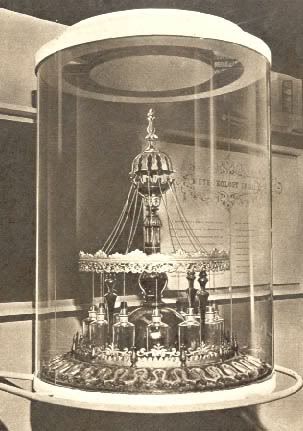
The Crystal Palace
An attendee of the Great Exhibition observed, "Large, piled-up ‘trophy’ exhibits in the central avenue revealed the organizers’ priorities; they generally put art or colonial raw materials in the most prestigious place. Technology and moving machinery were popular, especially working exhibits. [...] Visitors could watch the entire process of cotton production from spinning to finished cloth. Scientific instruments were found in class X, and included electric telegraphs, microscopes, air pumps and barometers, as well as musical, horological and surgical instruments."
Exhibits included: the Kon-i-noor, the world's largest known diamond at the time; the inadequacy of well-respected locks, as demonstrated by Alfred Charles Hobbs; a precursor to the fax machine, invented by Frederick Bakewell; Matthew Brady's daguerrotypes; an early automatic voting machine, invented by William Chamberlin, Jr. of Sussex; and the Tempest Prognosticator, a leech-powered barometer.

The Tempest Prognosticator
Some feared the attendees might become a mob; Karl Marx thought the Great Exhibition was emblematic of capitalism. Regardless, the Great Exhibition of 1851 identified Great Britain as a superpower and made modern discoveries accessible to the masses.
No comments:
Post a Comment